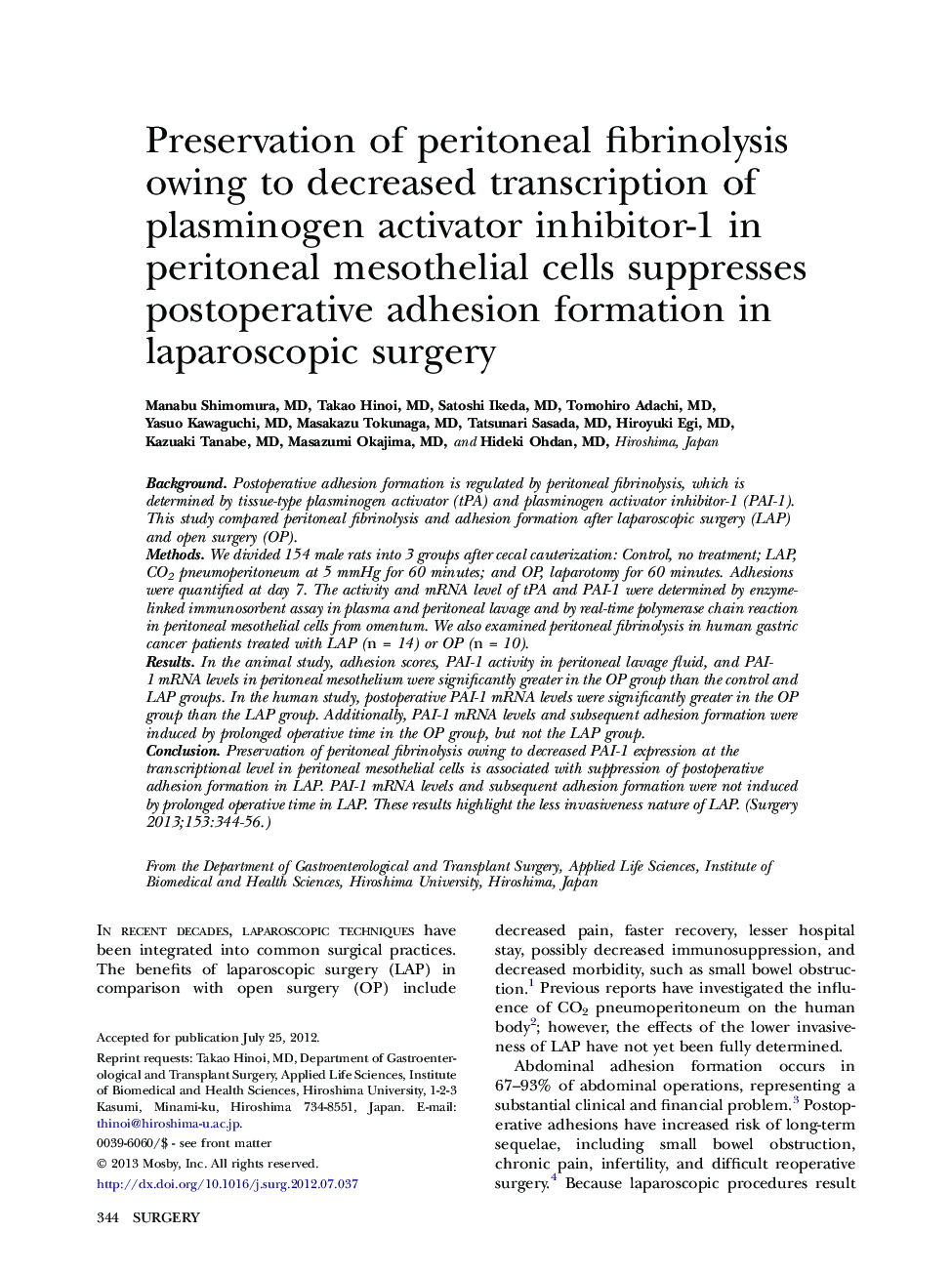| Article ID | Journal | Published Year | Pages | File Type |
|---|---|---|---|---|
| 4307920 | Surgery | 2013 | 13 Pages |
BackgroundPostoperative adhesion formation is regulated by peritoneal fibrinolysis, which is determined by tissue-type plasminogen activator (tPA) and plasminogen activator inhibitor-1 (PAI-1). This study compared peritoneal fibrinolysis and adhesion formation after laparoscopic surgery (LAP) and open surgery (OP).MethodsWe divided 154 male rats into 3 groups after cecal cauterization: Control, no treatment; LAP, CO2 pneumoperitoneum at 5 mmHg for 60 minutes; and OP, laparotomy for 60 minutes. Adhesions were quantified at day 7. The activity and mRNA level of tPA and PAI-1 were determined by enzyme-linked immunosorbent assay in plasma and peritoneal lavage and by real-time polymerase chain reaction in peritoneal mesothelial cells from omentum. We also examined peritoneal fibrinolysis in human gastric cancer patients treated with LAP (n = 14) or OP (n = 10).ResultsIn the animal study, adhesion scores, PAI-1 activity in peritoneal lavage fluid, and PAI-1 mRNA levels in peritoneal mesothelium were significantly greater in the OP group than the control and LAP groups. In the human study, postoperative PAI-1 mRNA levels were significantly greater in the OP group than the LAP group. Additionally, PAI-1 mRNA levels and subsequent adhesion formation were induced by prolonged operative time in the OP group, but not the LAP group.ConclusionPreservation of peritoneal fibrinolysis owing to decreased PAI-1 expression at the transcriptional level in peritoneal mesothelial cells is associated with suppression of postoperative adhesion formation in LAP. PAI-1 mRNA levels and subsequent adhesion formation were not induced by prolonged operative time in LAP. These results highlight the less invasiveness nature of LAP.
